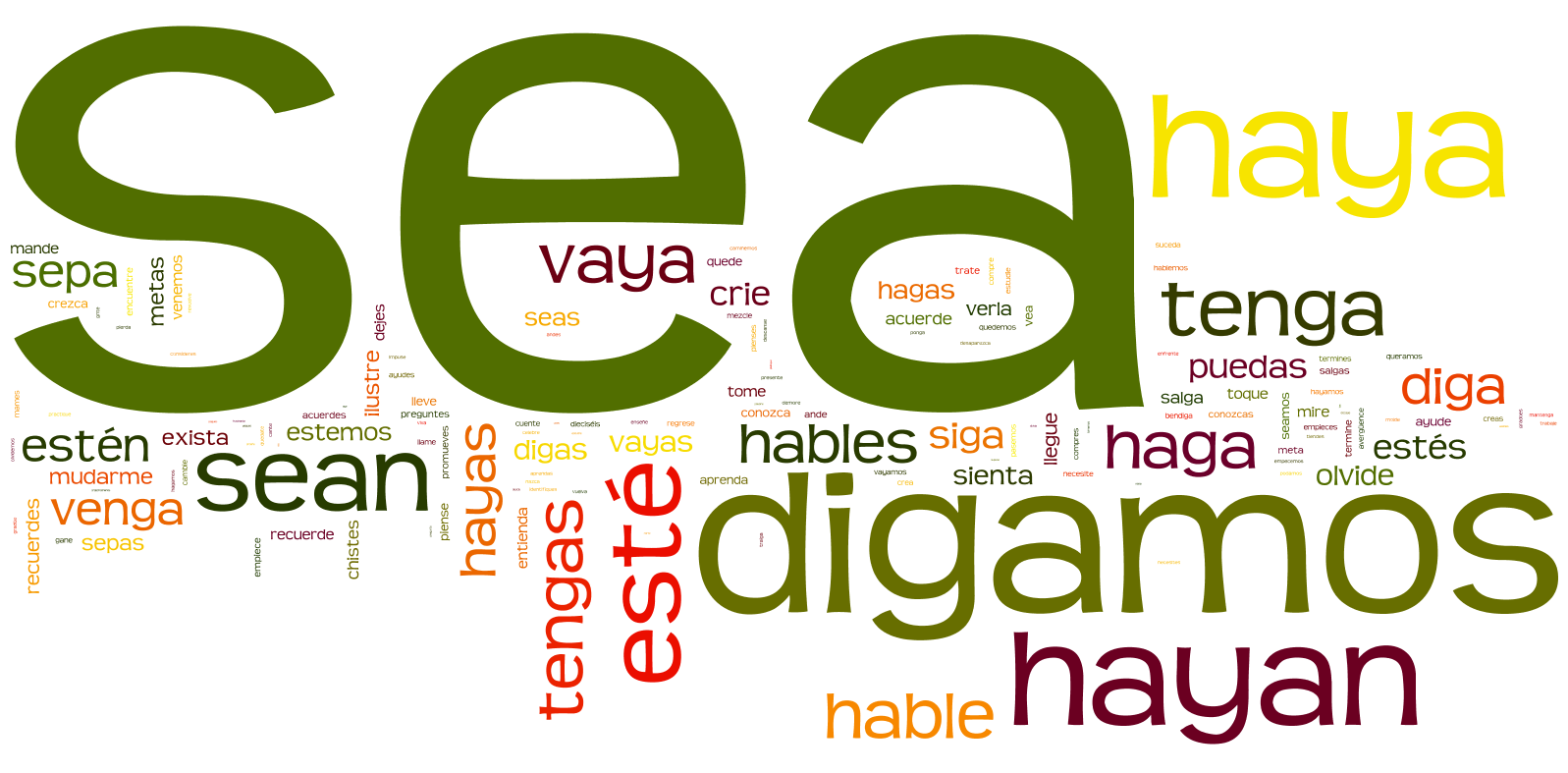Pruebita Capítulo 6: El subjuntivo con cláusulas de emoción y duda
- Due Aug 13, 2019 at 11:59pm
- Points 19
- Questions 1
- Time Limit None
- Allowed Attempts Unlimited
Instructions

Instrucciones:
Lee la siguiente explicación que te recuerda lo que tu libro de texto Más/Connect explica:
The subjunctive is used after expressions of emotion and reactions to something. Remember that the subjunctive is found in the subordinate clause of sentences that contain a change of subject from the main clause to the subordinate clause. A very common structure that triggers the subjunctive is es + adjective + que expressing opinions. Here is a list of common expressions of emotion with which the subjunctive is found in the subordinate clause:
(http://grammar.spanishintexas.org/verbs/subjunctive/)
Expresiones de emoción con el subjuntivo:
| me gusta que | I like that | es fundamental que | it is key that |
| me molesta que | it annoys me that | sentir que | to be sorry that |
| me encanta que | I am delighted that | es bueno que | it is good that |
| me sorprende que | I am surprised that | es inútil que | it is useless that |
| es bonito que | it is nice that | temer que | to fear that |
| es importante que | it is important that | es urgente que | it is urgent that |
| es triste que | it is sad that | tener miedo de que | to fear that |
| es justo que | it is fair that | es absurdo que | it is absurd that |
Es muy bonito que sepan los dos idiomas.It is very nice that they speak both languages.
The expressions es cierto que, it is true that, es obvio que, it is obvious that, es verdad que, it is true that, and es evidente que, it is evident that are exceptions since they are followed by the indicative and not by the subjunctive.
However, when these expressions are used in the negative, in the subordinate clause the subjunctive is used.
No es evidente que tengas razón. It is not evident that you are right.
|
Expresiones que usan el INDICATIVO cuando se usan para AFIRMAR |
|
Expresiones que usan el SUBJUNTIVO cuando se usan para NEGAR |
|
es obvio que |
It is obvious that… |
No es obvio que.. |
|
es verdad que |
It is true that… |
No es verdad que.. |
|
es evidente que |
It is evident that… |
No es evidente que… |
|
es cierto que |
It is true that… |
No es cierto que… |
Negative Opinions and Doubt
The subjunctive occurs in dependent clauses introduced by verbs and expressions of doubt or negative opinions whenever there are two different subjects in the two clauses linked by the subordinating conjunction que. Here is a list of common expressions of negative opinion and doubt with which the subjunctive is found in the subordinate clause:
| no *creer que | to not believe that … |
| no *pensar que | to not think that … |
| dudar que | to doubt that … |
| no *opinar que | to not think that … |
| no *me/te/le/nos/les parece que | it doesn’t seem to me/you/him that… |
La verdad no, no creo que eso sea correcto.Actually no, I do not think this is fair.
*Remember that such expressions of opinion, when used in affirmative statements, are followed by the indicative.